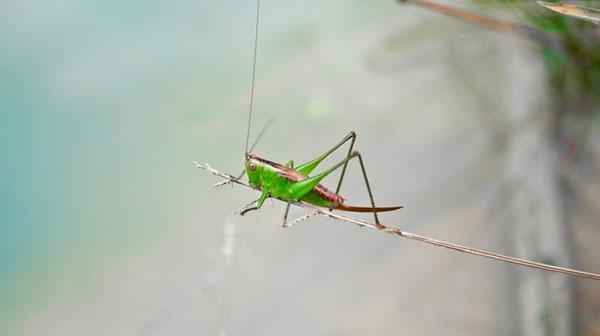You are here
Crickets make leap in demand as a protein
By AP - Jan 14,2017 - Last updated at Jan 14,2017

Photo courtesy of pixabay.com
WILLISTON, Vermont — At Tomorrow’s Harvest farm, you won’t find acres of land on which animals graze, or rows of corn, or bales of hay. Just stacks of boxes in a basement and the summery song of thousands of chirping crickets.
It’s one of a growing number of operations raising crickets for human consumption that these farmers say is more ecologically sound than meat, but acknowledge is sure to bug some people out.
Once consumers get beyond the ick factor, they say, there are a lot of benefits to consuming bugs.
“We don’t need everybody to eat insects,” said Robert Nathan Allen, founder and director of Little Herds, an educational nonprofit in Austin, Texas, that promotes the use of insects for human food and animal feed. “The point we really like to highlight with the education is that if only a small per cent of people add this to their diet, there’s a huge environmental impact.”
Cricket fans say if only 1 per cent of the US population substituted even just 1 per cent of their meat consumption with insects, millions of gallons of water in drinking and irrigation would be saved, along with thousands of metric tons of greenhouse-gas emissions from machinery and animals.
At least one study finds the claims overstated that crickets are a viable protein source to supplement or replace meat, but bottom line, it generally takes fewer resources to raise and harvest crickets than, say, cattle.
Interest in entomophagy — the consumption of insects — was fuelled in part by a 2013 report from the Food and Agriculture Organisation of the United Nations on the viability of edible insects to help curb world hunger.
Since then, the number of producers of food containing crickets, from protein bars to chip, has jumped from zero to about 20, and cricket farms for human food have grown to about half a dozen in the United States, Allen said.
The protein-packed food can be ground into powder and added to other foods or eaten whole, dried, sauteed and spiced. Crickets have a nutty or earthy flavour that’s masked by other flavours in protein bars.
Self-described adventurous eater Matthew Monroe, 53, of Portland, Oregon, said he’s fond of blueberry-vanilla Exo bars containing cricket flour and dines on them when he gets that “protein bar jonesing feeling”. They also taste better than other protein bars, he said.
There’s no problem selling crickets as long as manufacturers ensure the food they produce for the US market is safe, and complies with all relevant laws and Food and Drug Administration regulations, including proper labeling.
Raising crickets doesn’t take much space, but there are complexities.
Stephen Swanson, proprietor of Tomorrow’s Harvest, said he constantly checks conditions — water, food, temperature, air flow and humidity — in the basement where he’s raising roughly half-a-million crickets.
Swanson, who just started selling cricket protein powder online, hopes to get into a warehouse where some of the work could be automated.
“The sky’s the limit. This is the stone age right now as far as insect farming,” he said. “So we have nowhere to go but up.”
Kevin Bachhuber knows that firsthand. He started the first US cricket farm for human food in the Youngstown, Ohio, area, according to Allen. It operated until lead in his water supply prompted him to close it, Bachhuber said.
Now, Bachhuber said, he is helping new cricket farmers get started or existing farms that raise crickets for reptile feed and fish bait get up to food grade standards.
“For the first couple years, you know, we always struggled with having enough supply. Now that we’re starting to be able to add some of these older farmers into our supply chain. ... It’s not quite so heavy pressure,” Bachhuber said.
The first US academic conference devoted to insects for food and feed was held in Detroit in May. Now the young industry is forming The North American Edible Insect Coalition , a trade group, with the priorities being research and public education.
“Half the battle if not more is educating people why. You can’t just say, ‘Eat crickets, please.’ You have to tell them why,” Swanson said.
Related Articles
PARIS — Just two degrees of warming causes lizards to change their eating habits resulting in less healthy adult reptiles, according to rese
These are just some of the food innovations that researchers say will be crucial to combat malnutrition in the face of climate change and other system shocks.
Rather than imposing dogma, she hopes the “Meat The Future” exhibition will “give people the information that allows them to make up their own mind about the kind of future that they want”.


















